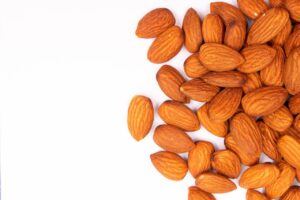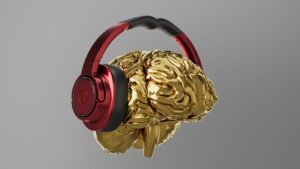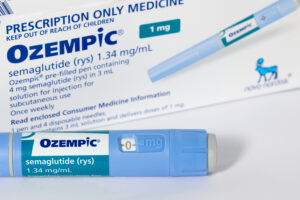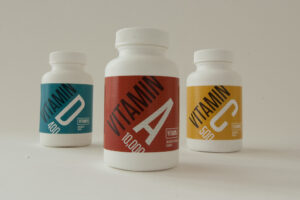Introduction to Biohacking
Biohacking, sometimes referred to as “Do-It-Yourself Biology” (DIY biology), is a broad and rapidly growing movement that encompasses a wide range of practices aimed at optimizing human performance and health. At its core, biohacking seeks to improve physical, mental, and emotional well-being by combining biological experimentation with modern technology, dietary strategies, fitness regimens, and, in some cases, invasive techniques. It’s about understanding and influencing your body’s biology to maximize your potential.
From simple lifestyle changes, such as adopting healthier diets or practicing intermittent fasting, to more extreme interventions like implanting RFID chips or genetic modification, biohacking encompasses a wide spectrum of activities. This practice is part science, part experimentation, and for some, a way of life aimed at pushing the boundaries of human capability.
In this article, we will explore the various aspects of biohacking, its origins, ethical considerations, and popular practices, as well as potential risks and rewards. We will also discuss how biohacking is being applied in the modern world, from its impact on healthcare to its role in longevity and mental enhancement.
The Origins and Evolution of Biohacking
While the concept of biohacking may seem modern, its roots can be traced back to traditional health optimization techniques, such as herbal medicine, fasting, and exercise. The idea of improving human biology through interventions has existed for centuries, but the modern biohacking movement started to gain traction in the early 2000s.
Early Pioneers in Biohacking
One of the early pioneers of the biohacking movement was Dave Asprey, the founder of Bulletproof and the creator of Bulletproof Coffee. Asprey experimented with various diets, supplements, and lifestyle changes to improve his energy levels, cognitive performance, and overall health. His goal was to create a life optimization formula that others could follow, and his experiments with coffee blended with butter and MCT oil became a cornerstone of the movement. Asprey’s experiments and his focus on improving brain function through nutrition and supplementation were a catalyst for popularizing biohacking.
Around the same time, DIY biology emerged as a way for amateur scientists and biology enthusiasts to experiment with biological systems outside of traditional laboratories. This grassroots science movement attracted curious individuals looking to explore the boundaries of biology without the need for formal academic credentials or institutional oversight. While DIY biology initially focused on microbiology and genetic engineering, it eventually merged with biohacking, as people began applying these techniques to their own bodies.
Modern Biohacking: A Blend of Science, Technology, and Experimentation
Today, biohacking has evolved into a much broader and more diverse movement. It ranges from simple self-optimization techniques, such as taking supplements and optimizing sleep cycles, to more extreme forms of body modification and the use of cutting-edge technology. The convergence of biotechnology, personal experimentation, and the quantified-self movement (tracking biometric data) has fueled the rapid expansion of biohacking.
Biohacking has also expanded into the realms of nootropics, personalized medicine, and longevity research, with individuals and companies striving to use science and technology to unlock human potential and extend life expectancy. Entrepreneurs like Elon Musk, through projects like Neuralink, are exploring the potential for brain-computer interfaces, while other biohackers focus on more immediate, practical changes like optimizing gut health, improving brain function, and enhancing physical performance.
Popular Biohacking Practices
Biohacking spans a wide variety of disciplines and techniques. Some practices are simple and widely accepted, while others are more experimental and controversial. Below are some of the most popular biohacking practices in use today.
1. Intermittent Fasting
One of the most common and accessible forms of biohacking is intermittent fasting, a dietary strategy that involves cycling between periods of eating and fasting. Fasting has been practiced for thousands of years, but its benefits for weight management, metabolic health, and longevity have made it a central pillar of the biohacking movement.
Intermittent fasting works by triggering a state of ketosis, where the body burns fat for fuel instead of glucose. It also promotes autophagy, a process where the body breaks down and removes damaged cells, potentially reducing the risk of age-related diseases.
Common intermittent fasting protocols include:
- 16/8 method: 16 hours of fasting followed by an 8-hour eating window.
- 5:2 method: Eating normally for five days a week and restricting calorie intake to 500-600 calories for two non-consecutive days.
- Alternate-day fasting: Fasting every other day while consuming normal calories on non-fasting days.
Biohackers claim that intermittent fasting not only promotes weight loss but also boosts cognitive function, improves mood, and increases longevity.
2. Nootropics and Cognitive Enhancement
Nootropics, also known as smart drugs or cognitive enhancers, are substances that are believed to improve brain function. These compounds are designed to boost memory, creativity, focus, and motivation, making them a key area of interest for biohackers seeking mental performance optimization.
Nootropics can be classified into two categories:
- Natural nootropics: Substances like caffeine, L-theanine (found in green tea), and herbs like bacopa monnieriand ginkgo biloba.
- Synthetic nootropics: Pharmaceuticals such as modafinil, piracetam, and adrafanil, which are often used to enhance cognitive function in conditions like ADHD but are also used off-label by those looking for a mental edge.
Biohackers often experiment with different nootropic “stacks” (combinations of supplements) to find the optimal balance for improving cognitive function. While the science behind nootropics is still evolving, many individuals report improved focus, productivity, and mental clarity when using them.
3. Bulletproof Coffee and Ketogenic Diets
As mentioned earlier, Bulletproof Coffee is a high-fat coffee beverage designed to promote mental clarity and sustained energy. It typically consists of coffee blended with grass-fed butter and medium-chain triglyceride (MCT) oil. This high-fat drink helps biohackers maintain a state of ketosis—a metabolic state in which the body burns fat for energy instead of carbohydrates. Ketosis is also the goal of the ketogenic diet, a low-carb, high-fat diet.
The ketogenic diet, which emphasizes healthy fats, moderate protein, and very low carbohydrates, has gained popularity in the biohacking community for its ability to promote fat loss, enhance mental focus, and stabilize blood sugar levels. By encouraging the body to use fat as its primary fuel source, the ketogenic diet can lead to better metabolic health and increased mental stamina.
4. Wearable Tech and Data Tracking
The rise of wearable technology has empowered biohackers to track and optimize their physical and mental performance with unprecedented precision. Devices like the Oura Ring, Fitbit, and Apple Watch track biometric data such as heart rate, sleep patterns, and physical activity levels. These wearables help individuals monitor their health and make informed decisions about exercise, sleep, and recovery.
By collecting data, biohackers can adjust their routines, diets, and workouts based on real-time insights. For example, sleep tracking can reveal whether you’re getting enough deep and REM sleep, which are crucial for memory consolidation and muscle repair. By optimizing sleep quality, biohackers aim to enhance mental clarity, physical performance, and overall well-being.
5. Cold Exposure and Cryotherapy
Cold exposure has long been used to reduce inflammation, boost circulation, and promote mental resilience. Biohackers take this a step further with practices like cryotherapy and cold showers to stimulate the body’s natural healing processes and improve overall health.
- Cold Showers: A common biohacking practice is taking cold showers or plunges, which have been shown to improve circulation, reduce muscle soreness, and enhance mood by triggering the release of endorphins and norepinephrine.
- Cryotherapy: Whole-body cryotherapy, where individuals are exposed to extremely low temperatures for a few minutes, is thought to reduce inflammation, speed up recovery after workouts, and increase metabolic rate.
The Wim Hof Method, created by the Dutch extreme athlete Wim Hof, combines cold exposure, controlled breathing, and meditation to increase resilience and energy levels. This method has gained popularity among biohackers looking to optimize both physical and mental well-being.
6. Biohacking Sleep
Sleep is critical to health and well-being, and biohackers often go to great lengths to optimize their sleep quality. Poor sleep is linked to a range of health issues, including cognitive decline, obesity, and heart disease. As a result, biohackers focus on creating ideal sleep environments and using sleep aids to improve their sleep cycles.
- Blue Light Blocking: Exposure to blue light from screens before bedtime can interfere with the production of melatonin, the hormone responsible for regulating sleep. Biohackers often wear blue light-blocking glasses in the evening to prevent disruption of their circadian rhythms.
- Sleep Tracking: Wearable devices can track sleep patterns, providing insights into how much deep sleep, REM sleep, and light sleep individuals are getting. Armed with this information, biohackers adjust their bedtime routines, environments, or even try supplements like melatonin or magnesium to enhance sleep quality.
The Cutting Edge of Biohacking: Body Modification and Genetic Engineering
While most biohacking practices revolve around lifestyle changes and dietary supplements, there is a more extreme side of the movement that involves body modification and genetic engineering. These methods push the boundaries of what it means to be human and raise complex ethical and safety concerns.
1. Implants and Cybernetics
Some biohackers, known as grinders, experiment with implanting technology into their bodies to augment their natural abilities. These biohackers are at the forefront of merging human biology with technology, often referred to as cyborgs.
- RFID Implants: RFID (Radio Frequency Identification) chips are small devices that can be implanted under the skin to store data or interact with external systems. For example, some biohackers use RFID chips to unlock doors or access digital devices without needing a key or password.
- Magnetic Implants: Another popular body modification involves implanting small magnets under the skin, typically in the fingertips. These magnets allow biohackers to sense electromagnetic fields, which some claim gives them an extra “sense” or an enhanced connection to their environment.
2. CRISPR and Genetic Engineering
Perhaps the most controversial form of biohacking is genetic engineering using technologies like CRISPR. CRISPR (Clustered Regularly Interspaced Short Palindromic Repeats) is a gene-editing tool that allows scientists to modify DNA sequences. In the context of biohacking, some individuals have experimented with CRISPR to alter their genetic makeup.
While DIY CRISPR kits are available, the ethics and safety of using gene-editing technology on humans without proper oversight are hotly debated. Potential risks include unintended genetic mutations, health complications, and unknown long-term consequences.
The Ethical and Legal Implications of Biohacking
The rapid growth of biohacking, especially in areas like genetic engineering and body modification, has sparked discussions about the ethical and legal implications of these practices.
Ethical Concerns
- Informed Consent: Many biohacking practices, particularly those involving body modification or experimental substances, raise questions about informed consent and safety. Without the oversight of medical professionals, individuals may be at risk of harm from procedures or treatments that haven’t been adequately tested.
- Unequal Access: As biohacking becomes more mainstream, there are concerns about unequal access to these technologies. Many of the more advanced forms of biohacking, such as genetic engineering or cybernetic implants, may only be available to those with financial means, potentially creating a new class of biologically enhanced humans.
- Long-Term Risks: The long-term effects of certain biohacking practices, especially genetic modifications, are unknown. Biohackers may be taking significant risks by experimenting with their biology in ways that could have unintended consequences for their health.
Legal Considerations
Biohacking exists in a gray area of legality, as many of the substances and technologies used are not strictly regulated. However, as the movement grows, there is a possibility that governments and regulatory bodies will impose stricter rules on certain biohacking practices, especially those involving pharmaceuticals, gene-editing, or body implants.
Conclusion
Biohacking represents a new frontier in the pursuit of health, performance, and longevity. From simple lifestyle hacks like intermittent fasting and nootropic supplementation to cutting-edge technologies like CRISPR and cybernetic implants, biohackers are pushing the boundaries of what is possible with the human body. While the movement offers promising benefits, it also raises ethical and safety concerns that must be addressed as the field continues to evolve.
For those interested in biohacking, it’s essential to approach the practice with caution, informed by both science and common sense. As with any form of self-experimentation, safety should always be the top priority. When done responsibly, biohacking can be an exciting way to explore human potential, unlock new levels of performance, and enhance overall well-being.










